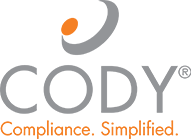How a Medicare Advantage Voucher Program could be the Next Medicare Part D
With 10,000 Americans entering Medicare every day, the health plan industry continues to expand. In 2015, 55.5 million people were enrolled in Medicare. By 2020, that number is expected to increase to 64.4 million, and to balloon to 81.8 million by 2030.
Yet, of the current 55.5 million Medicare beneficiaries, only a third are enrolled in Medicare Advantage (MA) plans. There is plenty of opportunity for MA plans to grow – and it could happen sooner than most people think, especially if certain factors come into play.
Paul Ryan, Speaker of the United States House of Representatives, and others have vocally supported the implementation of a voucher-like program that would provide eligible members the opportunity to join MA plans. If adopted, this model would push members of traditional Medicare into Medicare Advantage plans, prompting a significant influx of new members into MA plans akin to the launch of Medicare Part D.
When Medicare Part D, also called the Medicare prescription drug benefit, launched in 2006, 53 percent of Medicare beneficiaries enrolled the first year. Today, a little more than 10 years later, more than 45 million Medicare beneficiaries are enrolled in Medicare drug plans.
With Seema Verma appointed as the new Administrator of the Centers for Medicare and Medicaid Services (CMS), it’s not unreasonable to speculate that a voucher program could come to pass. Verma, who has close ties to Vice President-elect Mike Pence, designed his Obamacare Medicaid expansion model in Indiana and has advised several Republican states on how to add conservative elements to their programs.
As with most healthcare models, there are potential pros and cons. While a voucher program could stimulate competition and give members better options, networks and products, the situation falls into uncharted territory.
But, what’s important for Medicare Advantage plans to realize is that if this model is adopted, it could spark enrollment numbers to double or triple. If this happens, MA plans will want to be prepared to operate at maximum efficiency to scale quickly while ensuring compliance.
If plans aren’t operating efficiently at 10,000 members, they certainly aren’t going to operate efficiently at 30,000 members – the problems will only compound. Here are a few things MA plans should aim to do in preparation of a sudden influx in enrollment:
- Streamline Processes and Workflow
MA plans should assess their organizational design, processes and personnel to determine whether or not the existing infrastructure is operating at maximum efficiency and mitigating compliance risk. Optimizing workflows and buttoning up processes now will make it easier for plans to scale and dramatically increase the chance of success for future growth.
For example, when our team evaluates health plans’ marketing communications departments, we often recommend workflow improvements, reassign current staff and make other recommendations to ensure the health plan is running like a well-oiled machine. We also provide compliance program oversight, and monitoring, auditing and identification of compliance risks so customized corrective action plans can be implemented.
- Outsource Where It Makes Sense
MA plans should also consider whether it’s possible to outsource tasks or functions rather than hiring full-time staff to accommodate a growing member base. It will be critical for these plans to find vendors that have deep experience working with health plans and in the managed care space. BPO partners should be experts in regulatory compliance and industry best practices.
For example, health plans often contact us when they have received a regulatory deficiency or can no longer effectively produce required member marketing materials using their internal resources. In these engagements, we prepare plans’ materials on an outsourced basis for a limited period or for the long term. We also conduct mock audits to prepare plans for a real audit by CMS.
- Use the Right Technology
MA plans can dramatically improve efficiencies and prepare for sudden growth by implementing the right technology. In many cases, using software that has been designed for the industry is a plan’s best bet, given the rules and regulations plans are required to follow.
For example, our CodySoft® suite of software was built to specifically address the complexities and nuances of creating health plan member marketing materials. With features that integrate compliance protocols, CodySoft speeds up the process of creating AEP materials, mitigates compliance risk and makes reporting a breeze.
If a voucher program for Medicare Advantage comes to pass, MA plans that prepare to scale quickly will be the ones to succeed in the long run.
